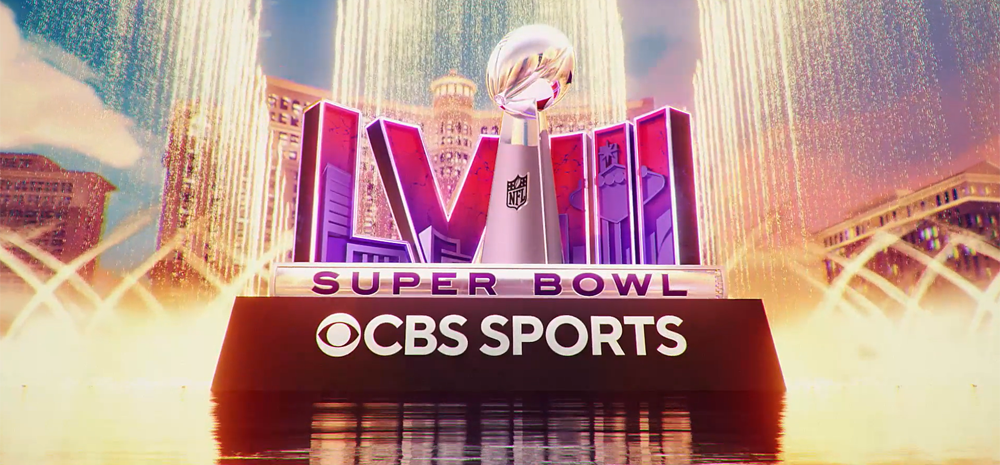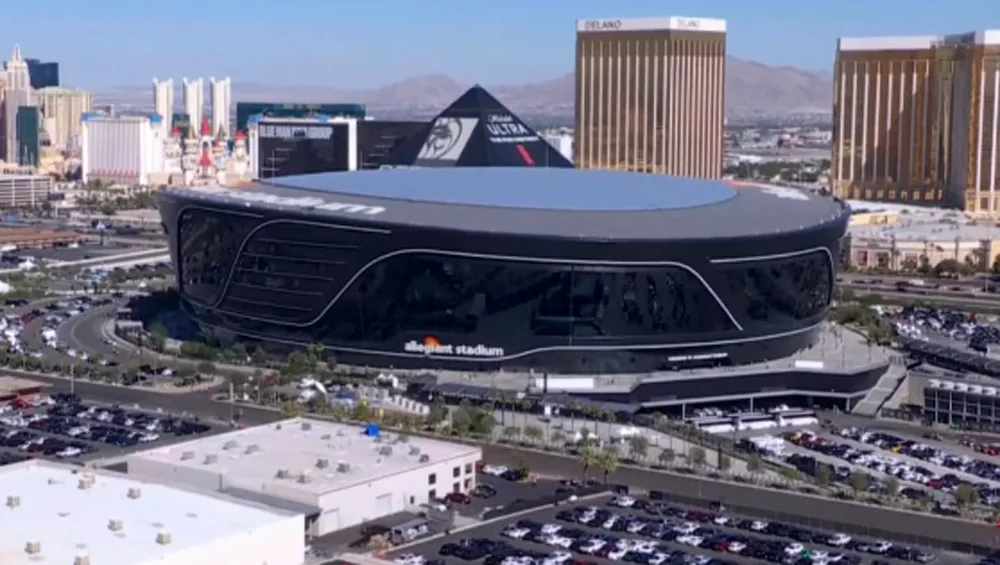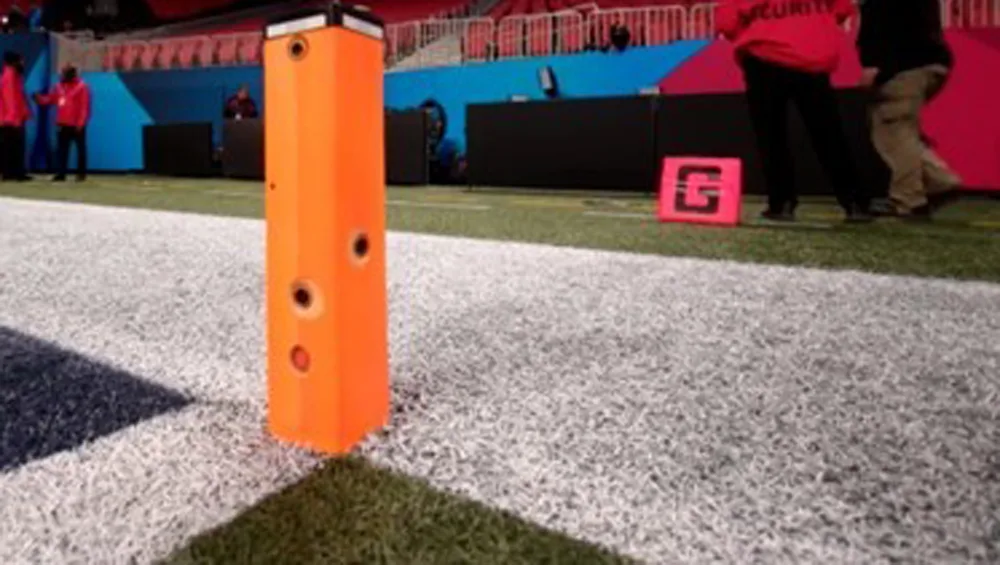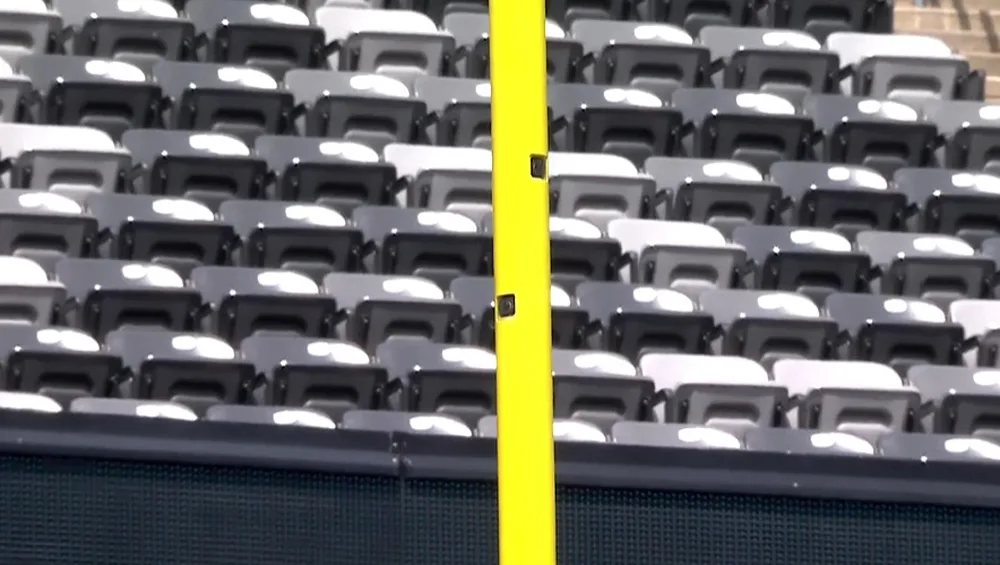CBS Goes All-In On HDR, AR For Super Bowl

This year’s Super Bowl between the San Francisco 49ers and Kansas City Chiefs will be the first Super Bowl to played in Las Vegas. And CBS is also breaking new ground with its coverage, in terms of both the technology it is employing and the sheer volume of on-site production it is doing this week from the host city.
For the first time, the broadcast network is producing the game, as well as pregame, halftime and postgame show, in the 1080p HDR (high dynamic range) format, which it will stream on Paramount+, CBS.com and the CBS Sports apps (CBS will also provide a 1080p feed to the NFL+ mobile platform).
CBS will upconvert the 1080p HDR feed to 4K HDR for distribution among select pay TV operators, and downconvert it to 1080i SDR (standard dynamic range) for its traditional broadcast distribution. Fox has taken a similar technical approach to supplying 1080p HDR, 4K HDR and 720p SDR feeds for its last two Super Bowls, in 2021 and 2023.
 CBS’s 1080p HDR production from Allegiant Stadium will also be used as the backbone of an alternative broadcast on the children’s network Nickelodeon, Super Bowl LVIII Live from Bikini Bottom, that will use enhanced graphics and augmented reality (AR) to incorporate characters from the popular SpongeBob SquarePants animated series into live game coverage.
CBS’s 1080p HDR production from Allegiant Stadium will also be used as the backbone of an alternative broadcast on the children’s network Nickelodeon, Super Bowl LVIII Live from Bikini Bottom, that will use enhanced graphics and augmented reality (AR) to incorporate characters from the popular SpongeBob SquarePants animated series into live game coverage.
A Big Pregame Push
Leading up to kickoff at 6:30 p.m. ET Sunday, CBS will have seven hours of pregame coverage including a four-hour edition of its flagship The NFL Today studio show and a one-hour historical documentary on the creation of that show, You Are Looking Live! But one could argue that CBS’s pregame programming is actually far more expansive, as the broadcast network and its associated cable and streaming properties have been producing live shows from Sin City all week, for a total of 115 hours.
In addition to building sets inside and outside Allegiant Stadium, CBS has taken up residency in front of the Bellagio hotel’s famous fountains on the Las Vegas Strip with four outdoor sets serving sports, news and entertainment shows across four CBS divisions.
In addition to varied programming from CBS Sports Network and 40 hours of coverage from the CBS Sports HQ streaming service, other shows originating from Las Vegas this week include CBS News’ CBS Mornings (Feb. 8 and 9), CBS Saturday Morning,(Feb. 10) and CBS Evening News with Norah O’Donnell (Feb. 8 and 9), along with live inserts from CBS Owned Television Stations and affiliates during their local newscasts; CBS Entertainment’s The Talk; and CBS Media Ventures’ Entertainment Tonight and Inside Edition. The Drew Barrymore Show has also been taping segments in Las Vegas this week.
“The technology will be the star, and it will capture the city,” says Harold Bryant, executive producer and EVP, production, CBS Sports. “We are weaving Vegas into everything we do.”
In total, CBS will use 165 cameras this Sunday for its coverage of the game as well as pregame, halftime and postgame shows, which the network says is the most ever for a Super Bowl. They will be supported by 19 mobile production trucks, including two dedicated to the Nickelodeon broadcast. CBS will have 1,000 people working the game onsite, as well as over 200 supporting it remotely from New York and other locations.
The lead game truck will be NEP’s SSCBS mobile production unit, as it was in 2021. Key gear includes Evertz IP routing, a Grass Valley Kayenne K-Frame production switcher, Calrec Artemis audio console, EVS replay systems and a bevy of Sony cameras, which will be used with Canon and Fujinon lenses. SSCBS will be supported by additional units from Game Creek Video, F&F Productions and NEP.
Game Creek’s Varsity unit, with a Grass Valley K-Frame switcher, Calrec Apollo audio board and Lawo/Arista IP routing, will serve as the “tape release” truck with extra production staff and replay operators to handle the myriad angles. Game Creek’s Prime, with Grass Valley switchers, Calrec audio boards and Evertz IP routing, will support the pregame show.
Nickelodeon will use Game Creek’s Columbia, with Grass Valley K-Frame switcher, Calrec Artemis audio board and Lawo/Arista IP routing, as its main game truck. And CBS Sports Network is producing its coverage from the Bellagio this week out of F&F’s GTX20 truck, which features a Grass Valley Kayenne XP K-Frame switcher, Calrec Apollo audio board and Grass Valley IP router.
CBS’s production of both pregame and game coverage is giving the city of Las Vegas a starring role, with a heavy use of aerial camera shots to capture its dynamic skyline. CBS will employ three sky cams, two fly cams (including a “trolley cam”) and three drones between the stadium and areas of the Strip, including the giant LED globe-shaped display that is the Las Vegas Sphere. CBS also has 24 live robotic cameras mounted inside the stadium and throughout the city to showcase various high-altitude perspectives.
“My team has been intimately involved in placing these strategically all around the city, so we’re excited about that coverage,” says Patty Power, EVP, operations & engineering, CBS Sports.
CBS has robotic cameras with full pan/tilt/zoom capabilities mounted atop four hotels. One camera on top of the Stratosphere gives a view of the Strip from north to south; one on top of Planet Hollywood gives a view of the Strip and can also capture the fountain show at the Bellagio; one on top of Mandalay Bay (in the Foundation Room restaurant) gives a view of Allegiant Stadium and can also pan for a look at the Strip; and another camera atop the Renaissance gives a view of the Sphere as well as parts of the Strip.
CBS is also using a plane to shoot aerials throughout the week, as well as multiple drones, and has a 1,000-foot flycam that runs across the water at the Bellagio’s fountains.
A 4K Focus
CBS will have 48 cameras with super slow-motion capability, 24 will be 4K units with the ability to zoom in to extract a 1080p replay, including Sony HDC-4800 and HDC-5500 system cameras that will record 4K at up to 4 times real time (240 frames per second). While in the past CBS has experimented with using 8K cameras in overhead positions and then extracting replays from them, the network won’t do that year because of problems with motion blur when zooming in on the 8K images, says Mike Francis, VP, engineering & technology, CBS Sports.

Pylon cams at the end zones.
Instead, the network has focused on higher frame rates over resolution, including the placement of high-frame-rate 4K cameras directly above each goal line that can shoot straight down for a “bird’s eye” view of scoring attempts in the middle of the field. Even with “pylon cams” and other end-zone angles, sometimes shots of goal-line plays in that area of the field are obstructed by players’ bodies, Francis says.
“We hope if the right play happens that we may not have had a look with our traditional angles, these overhead views will give us something we haven’t had before,” Francis says.
Another new perspective will be provided by “doink” cameras, small super-slo-mo 4K units that are inserted into cutouts on the goal posts (“doink” is a term coined by the late John Madden, legendary NFL coach and TV commentator, to describe a football hitting an upright). There are three cameras installed in each goal post, with a camera in each upright shooting at a 45-degree angle back toward the center of the field and a third that shoots straight across to the other upright.
According to Jason Cohen, VP, remote technical operations, CBS Sports. the idea for the “doink” cameras came when he and Francis were in the stands at the 2023 Super Bowl in Glendale, Ariz., and the Chiefs’ Harrison Butker bounced a field goal attempt off the left upright. Cohen immediately contacted the NFL about the possibility of embedding a camera inside the upright, similar to the existing pylon cams.
The NFL was receptive, and CBS produced engineering drawings and schematics to make sure the integrity of the goal post wasn’t going to be compromised. It also consulted with CBS announcer and former NFL kicker Jay Feely about optimal camera placement. The network successfully tested the “doink cam” during a preseason New York Jets game at Met Life Stadium in New Jersey in August, and then again during a regular-season Las Vegas Raiders game at Allegiant in October.

“Doink” cameras, small super-slo-mo 4K units that are inserted into cutouts on the goal posts.
Cohen says that while a “doink” on a field goal or extra point attempt in Sunday’s game would be great, the new system should have value regardless.
“We can get a nice slow replay of the ball going through, so we’re not reliant on just doinks, and we can also get other shots from the field from that unique perspective,” he says.
Additional specialty cameras in the stadium include five shallow depth-of-field units for cinema-like closeups of players; 12 wireless RF cameras; a 53-foot “MovieBird Technocrane” on the upper concourse to provide sweeping views of the stadium; and an immersive Falcon 360 camera for panoramic views.
CBS has also invented another camera system, the “Red Cat” point of view (POV) unit, which feeds shots from a RED digital cinema camera on the catwalk via fiber to an Adobe After Effects motion graphics system. The fiber link will allow CBS to quickly repurpose some of the RED footage by key framing either a player or a ball to create a replay with a unique perspective. Cohen says he got the idea after seeing After Effects-enhanced replays that some NFL teams were posting on social media on the Monday or Tuesday after a regular-season game.
A Heavy Dose Of AR, XR
CBS will use a total of 23 AR cameras including 11 on the CBS game broadcast, eight on Nickelodeon and four at the pregame set on the Strip. Various AR graphic enhancements will be incorporated into both game and studio coverage, including graphics over the Bellagio fountains using a drone and fly cam as well as virtual AR opens for the studio show highlighting the Strip.
CBS is working with Silverspoon Animation for its AR elements, as well as SMT. It will also have a real-time 3D graphics package created with Unreal Engine, including a modified rendering of the Strip.
“It’s really cool interesting stuff that will make it feel like the entertainment capital,” says Bryant. “But also, the AR elements help tell the story.”
CBS will also be using extended reality (XR) technology, with NEP Sweetwater providing displays and KeexFrame handling XR graphics and design. The network actually created a portable XR stage that travelled to San Francisco and Kansas City last week to capture footage of players, allowing them to then be “transported” to the environment of Las Vegas Boulevard (or anywhere else, for that matter).

No comments:
Post a Comment